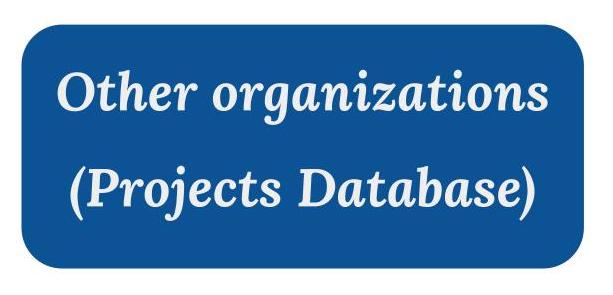Community / Land projects / Conservation and sustainable use of biodiversity: Strengthening network of protected areas through advanced go
Conservation and sustainable use of biodiversity: Strengthening network of protected areas through advanced go

€2189009.039
11/21 - 10/26
Active
This project is part of
Implementing Organisations
Donors
Data Providers
Objectives
To strengthen the effectiveness of Azerbaijan’s protected area system to deliver Global Environmental Benefits using a landscape approach to governance and management.
Other
Note: Disbursement data provided is cumulative and covers disbursement made by the project Agency.
Target Groups
1. The project will contribute significantly to a more effective management of Azerbaijan’s PA network, and improve environments both within PAs and in their surrounding areas. In other words, this project is expected to demonstrate good management practices to conserve biodiversity, provide opportunities for sustainable income generation for communities, and provide a model/financing strategy for sustainable financing across the national PAs system. 2. Improved conservation outcomes within PAs with regard to habitat and species management, and improved control of illegal and unsustainable uses will increase ecological resilience of selected PAs by reduction of threat posed by anthropogenic disturbances. The project will also provide for adoption of landscape-scale PAs planning across the country through the systems plan development, which will lead to increased resiliency of ecosystems. 3. At the site level, the project will bring in socio-economic benefits to local communities in and around the selected protected areas, with full consideration given to gender dimensions. Local community members in landscape surroundings will be provided with alternate opportunities through expanding of sustainable nature-based tourism of the selected PAs, engagement in PA-level enforcement, sustainable extraction practices, habitat improvement and species monitoring and recovery activities. 4. Additionally, providing support to local communities through sustainable/alternative livelihoods will enable them to better cope with climate-induced impacts and risks. 5. Also, improvement of conservation and ovrall management of PAs will also ensure the functioning of ecosystem services, which has direct impact to local popukation living around PAs and whose livelihood directly or inderctly depends from these services, through pollination, provision of fresh water, protection from floods,landslides and erosion and other services. 6. Improved capacity to develop alternate livelihoods and access to markets for biodiversity friendly, environmentally supportive products will partially mitigate loss of access for some users who traditionally depend on illegal or unsustainable harvesting of wildlife in the PAs. 7. In other words, the capacity built through the project and co-management arrangements with key other stakeholders are likely to improve the management and governance compared to the baseline scenario. Such improvements will be due to increased buy in by local communities and other relevant stakeholders in the value of PAs, due to the flow of sustainable resources from these PAs, increase in number and quality of livelihood benefits from these sites, and increased national visibility arising from the improved management of these sites as model site to emulate. 8. Participatory approaches developed under the project are likely to enhance the social capital and will lead to deeper involvement of local people in conservation activities in the future. Community strengthening and empowerment as a consequence of participation in the project is likely to sustain beyond the project. 9. Additionally, the activities of this project will build the capacity of government officials and other stakeholders to improve management and sustainable use of goods and services arising from PAs. These project activities will provide long-term national environmental benefits and the achievement of the project’s global environmental objective. The project outcomes will lead to the long-term viability of globally significant biodiversity in Azerbaijan by improving the regulatory, planning, institutional and financial frameworks for PA management. Specifically, by removing of existing barriers to effective management of globally threatened species and ecological communities, undertaking species recovery, habitat restoration activities, and the mitigation of key threats in model PAs will provide replicable models for improved management in other areas of the country. The adoption of a landscape approach to management of the ecosystems within the PAs system, will ensure viability of wildlife populations, sustained ecosystem services to local people, and help to improve resilience to climate change. 10. At the national level, environmental improvements will bring socioeconomic benefits, which will enhance environmental sustainability further, by strengthening the links between the PAs and the quality of life of people using the PAs. Improved engagement of stakeholders and management of PA resources will reduce the threats and impacts on biodiversity, leading to healthier, resilient and more productive ecosystems in the country. 11. Addressing gender and emphasizing the role of women in natural resources management projects is an entry for reversing environmental and land degradation. Women manage natural resources daily in their roles as farmers and household providers; typically, they are responsible for growing crops, collecting fuel wood, and water. Local values and practices have a major impact on their access to natural resources and the extent to whch women are engaged in conservation activities. Inequitable access and unequal playing fields has led women farmers to produce less and earn less than their male counterparts. Where both rural women and men are empowered to participate in decisions that affect their needs and vulnerabilities, they can help to ensure effective interventions for their conservation and sustainable use. Thus, the project will benefit both women and biodiversity conservation by: (a) improving women’s participation and decision-making in SLM at both the national and local levels; (b) improving women’s capacity for SLM and agricultural practices; and (c) improving livelihoods for women, including promotion of women and youth entrepreneurship, which will facilitate their earning higher incomes through more satisfying work.




